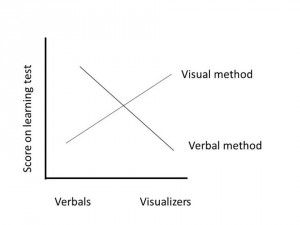 I am taking dancing lessons in preparation for my daughter’s wedding next month, and one of the things I’ve noticed is that when the instructor shows me a new step, it looks simple. But when I try it, I can’t get it until I step through it a few times.
I am taking dancing lessons in preparation for my daughter’s wedding next month, and one of the things I’ve noticed is that when the instructor shows me a new step, it looks simple. But when I try it, I can’t get it until I step through it a few times.
According to training lore, I guess that makes me a kinesthetic learner. But if you consider the corollary to that statement, I suppose an auditory learner would be able to pick up the steps simply by listening to the following instructions: “move your left foot about twelve inches to the side, then bring your right foot to meet it; next, advance your left foot forward a bit. But be sure to make the first two steps quick, and the third step slow…”
I had an opportunity recently to sit through a facilitation skills class put on by a major training company, and I was astonished to find that they still teach the idea that facilitators should tailor their techniques to the styles of their learners. One would think that they would have buried this myth long ago, since there is no scientific evidence to support it. Learning theorist Richard Mayer illustrated the weakness of the idea with one experiment that I’ve written about, and another famous example in the literature is described in John Medina’s book, Brain Rules. He describes a study in which expert wine tasters—about as kinesthetic as you can get—were completely fooled into describing white wines with the language reserved to reds, merely through the addition of food coloring. Maybe they were closet visual learners, but I doubt it.
Even if it were true, I can’t see how the instructor would actually change anything—they’d have to first, figure out how to quickly identify the style of each individual, and second, say or show everything three different ways to make sure everyone gets it.
But there actually is one way the idea applies, and dancing lessons offer a clue. It depends on the subject matter and the task. One can understand complicated verbal directions for navigating in a strange town, but a map is much more efficient. It’s possible to learn how to dance by watching others on YouTube, but trying the steps is much more efficient. You can memorize the words to a song by reading them on paper, but hearing them is much more efficient.
Why should this be important to you? Because if you believe the myth, it just becomes another useful excuse for why you didn’t learn something. The world is not going to accommodate itself to your imagined strengths and weaknesses.
You hear what I’m saying? Do you get the picture? Can you feel me?
One of the most widely-held beliefs about presentations and about learning is the idea that people have a preferred learning style—auditory, visual, or kinesthetic—so students learn more when the lesson is delivered in their learning style. A study cited in yesterday’s Wall Street Journal found that 94% of secondary school teachers they surveyed believed this is true.
And it’s not just teaching—a lot of sales experts tell us that we can sell more by using this idea: “Let’s see what the numbers look like. How does that sound to you?” (Full disclosure: I used to teach the idea in my own sales training, until I saw the science.)
Here’s a neat little experiment and accompanying visual that Richard Mayer reports in his book, Applying the Science of Learning. They first asked students a questionnaire to have them self-assess whether they were visual or verbal learners, and the strength of their preference. (e.g. “strongly more verbal than visual” compared to “slightly more visual than verbal”). They then taught a lesson to two randomly chosen groups, one in a verbal style and one in a visual style.
If the phenomenon does work, you would expect results to look something like this:
Instead, this is what the actual results looked like:
The first conclusion that can be drawn from these results is that even if Dick sees himself as visual, and Jane considers herself to be a verbal learner, they both learn the same amount, under either teaching style.
The second point is that the visual method results in greater learning, regardless of personal preference. As you can see, we are all visual learners.
Why should a salesperson care about this? There’s enough to keep track of in a sales conversation without spending valuable bandwidth worrying about the customer’s learning style and trying to change pick the right word to suit. Forget these tricks, and focus instead on sincerely understanding the customer’s needs and motivations, and on clearly explaining the value you bring.
I trust you hear my message loud and clear, that you see what I mean, and that you can wrap your arms around this concept.




